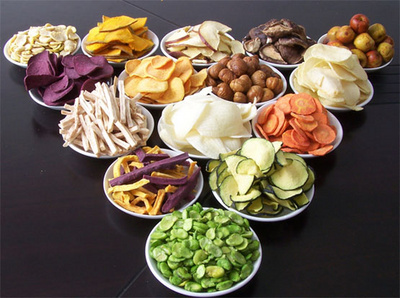A significant change in the latest trends of physical beauty and fitness has been observed in the past few decades and physical fitness is no more restricted to the overall weight and slim waist. It has been observed that even the people who are under normal weight range may have fat thigh that makes it embarrassing for them from to wear short dresses and skirts. By properly combining certain exercises along with a well-balanced thermogenic diet, you can easily get well- toned and smart looking thighs.
Exercise to Lose Weight on Your Thighs
Exercise is the most essential method of achieving targeted weight loss and is superior to dieting in a number of ways. With exercise, you can maintain your basal metabolic rate as well as:
- Strengthen your muscles
- Tone your body
- Stabilize your posture, joints and ligaments
Below are a few warnings that you must consider before starting any workout session:
- Make sure to start off slowly and gently. If you are dealing with weights or hardcore stretching exercises, make sure to perform the activities more smoothly and gradually. Avoid over-stressing your muscles, tissues and ligaments to prevent tearing and damage.
- It is better to seek professional assistance by a physical trainer in order to get maximally benefitted from your exercise regimen.
- If you experience severe pain or discomfort in your limbs, muscles or joints after exercise, seek immediate assistance.
Here are a few exercises that especially target your thigh fat:
1. Do Cardio to Slim Your Whole Body
Use exercises like cycling, hiking, swimming and sports that target your entire body. This is helpful in shedding extra pounds from the body as well as from thighs and hips region without overstressing your joints and bones. Moreover, it is also helpful for people who have certain joint and bone conditions that prevent them from performing normal physical activity.
A lot of people rely on yoga and meditation for weight loss, which unfortunately is not a completely correct approach. The total calorie expenditure via yoga is only 200 calories/hour which is very low as compared to most sports and recreational physical activities like basketball, football and swimming (more than 800 calories/hour). You can do after the following video.
2. Practice Thinner, Tighter Thigh Workout
Sometimes, when people fall under normal weight range and are in perfect shape, it is much more desired to adopt a targeted approach by using certain exercises that increases fat burning at localized sites only. If you are also troubled by fat thighs, perform these target oriented exercises to tone your thigh muscles, so that you can walk with proud in any and every dress that your heart desires without worrying about your thighs. You can do after the following video.
3. Get Enough Beauty Rest after Exercising
Exercise and physical activity stimulates your cells and enhance metabolism; however, in order to maintain regular exercise and healthy weight loss, it is recommended to rest your body after a workout session to allow muscles and ligaments to heal and repair.
A Healthy Diet to Lose Weight on Your Thighs
Besides exercise, diet also plays an essential role in keeping your weight and metabolism in check. A few healthy diet modification tips are listed below:
1. Limit Sweets in Your Drinks
Research data suggests that eliminating sugary fuzzy drinks from your daily diet alone can decrease your calories consumption by almost 20 to 40%.
- Instead of drinking aerated beverages, it is healthy to increase the intake of plain water. Water speeds up the metabolism and also acts as an appetite suppressant.
- To add a little flavor to your water, you can add lemon juice that also stimulate fat loss at rest.
- Supply anti-oxidants like Vitamin C that decrease free radical damage.
- Increase your intake of green tea to stimulate metabolism and instead of adding sugar in your tea, try natural flavors like cinnamon or honey for sweetness.
2. Keep a Low-carbohydrate Diet
Carbohydrates are indeed the primary source of energy and whatever you consume is quickly metabolized to supply glucose to all the cells within the human body, but higher intake of simple carbohydrates like bakery items, candies and cookies can significantly affect your metabolism and insulin response. Make sure to learn about the concepts of healthy and balanced diet according to which your daily portions of carbohydrates should not exceed 170 to 240 gram (that corresponds to almost 45 to 65% of your entire caloric intake). Similarly, fat should constitute almost 20% to 35% of your caloric intake, suggesting no more than 35 and 60 grams per day.
- Increase your protein intake in the form of lean meat (fresh cuts of turkey and chicken) instead of fatty beef portions.
- Use non-sugar sweeteners for flavor instead of table sugar (more ideally use honey).
- Consume fresh fruits and vegetables instead of sugary desserts or bakery items.
3. Stick to a Low-calorie Diet
Calories are the energy currency of your body. If you consume too many calories, your tissues will store more fat and adipose cells leading to obesity and weight gain. Healthcare providers recommend consumption of foods that are low in calories and take longer to metabolize or digest. This includes salads and green leafy vegetables that are low in calorie content but increase the calorie expenditure during metabolic processes.
Make sure to avoid processed foods that are rich in calories and low in fiber content. The result is you feel hungry and consume more portions and calories. In order to induce early satiety, it is recommended to drink a glass of water or tea before meals to stimulate your metabolism and also to suppress hunger (in order to avoid over-eating). Make sure to calculate your daily caloric requirements in accordance with your weight and level of physical activity.
4. Try a Ketogenic (Keto) Diet
Keto diets contain a higher proportion of fats as compared to traditional Atkins diet and works on the principle of replacing carbohydrates with lipids and proteins. This is because, excessive intake of proteins is like consuming excess amount of indirect carbohydrates (excess proteins are converted into carbohydrates by the action of enzymes within human body).
According to ketogenic diet, the amount of calories obtained from fat should range from 70 to 75%, with very little intake from carbohydrates (only 10 to 15%) and leftover calories from proteins. Make sure to consume healthy fats (like nuts, lard and organic fats instead of dairy products).




